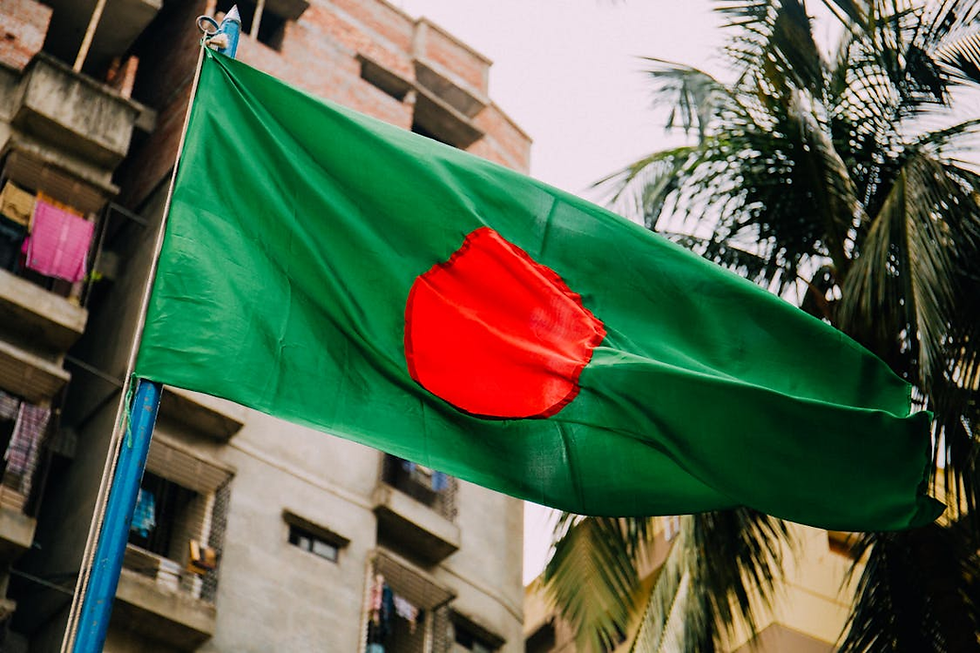Karachi "Overwhelmed" by Fatal Flooding
- Elizabeth Bratton

- Aug 31, 2020
- 3 min read
Updated: Dec 23, 2024
Elizabeth Bratton writes about the recent flooding in the Pakistani city of Karachi. Dozens have been killed, and hundreds of thousands are trapped or stranded. Monsoons are an annual occurence in most South Asian countries, as is the criticism the Pakistani government receives for its lack of preparation. Sewage water has leaked into homes, vehicles have rushed into buildings, and electricity supplies have been cut.
At least 90 people have died after several days of heavy rain and flooding in the Pakistani city of Karachi. The intense weather conditions have led to dozens of deaths, sewage leakages, and power outages.
Pakistan’s largest city has experienced 76cm of water in a five-day window. Specifically, on Thursday August 27, citizens endured more than 22cm of water in half a day. Authorities have had to deploy boats in order to rescue trapped citizens, while 20 Karachi residents were killed in “rain-related incidents”. 16 deaths occurred after flash flooding in the north-western province of Khyber Pakhtunkhwa.
Additionally, Al Jazeera reports that 31 people were killed in the southern Sindh province, 15 died in the southwestern Balochistan province, and 8 lives were lost in Punjab province. Another 13 died “elsewhere” in the north of the country; 3 people were also killed in Kashmir. Other casualties included those who had drowned at home, been crushed by collapsing walls, or electrocuted by short-circuited wires. Since June, at least 136 people have died as a result of heavy rains.

Dr Seemin Jamali, the executive director of the Jinnah Postgraduate Medical Centre, has labelled the situation “havoc”, and says the city has been “overwhelmed”. Frankly, he put it: “There is no way you can get out in that water”; hundreds of thousands are thought to be trapped. Roads have been submerged, preventing citizens from seeking aid, and drawing a halt to rescuers’ efforts. Dr Jamali recalls, "There was a lady who was in a wheelchair who drowned in the water from her own house, a 56-year-old lady who couldn't get out of her own house because she was differently-abled.”
Some report these to be Karachi’s “heaviest rains in almost a century”, as the death toll is expected to rise once emergency workers reach more isolated villages. As of August 10, State police spokesman Pramod Kumar believed there to be 80 unapproachable areas, due to mudslides. Those most likely to be trapped are people who live in “low-lying slums” that may be waterlogged. Sardar Sarfraz, Meteorological chief for the province of Sindh, is clear: “It has never rained so much in August.” Every year, Pakistan faces hundreds of deaths due to “monsoon season”. This usually occurs throughout the months of July and August, however climate change and Himalayan flooding are thought to have exacerbated the damage. The rainfall is “crucial to replenishing water supplies”, however death and destruction have become an annual occurrence.
Approximately 1000 homes have been damaged; footage of water, cars, and motorbikes entering various buildings has been shared online. One Twitter user exclaimed: "Every year the rain shows us that Karachi needs better infrastructure planning.... even hospitals such as Agha Khan are suffering... God help us all!” The Guardian reports that anger is mounting at a time where anxiety is already high due to COVID-19; the disease that has left 6,283 Pakistanis dead. Some residents believe the authorities are failing to offer sufficient aid.
Rain is expected to persist in the city where army troops have already been deployed; their role is to pump water away from the worst-affected areas. The military is also set to airlift food supplies to stranded residents. Those who are most vulnerable are being advised to “seek shelter on higher ground”, and at least 100,000 people have already been moved into emergency relief camps.
Pakistan is not the only country affected by the dangerous conditions. The Indian states of Karnataka and Maharashtra have reported “dozens” of fatalities, while hundreds of thousands have been evacuated. As of mid-July, many areas of central, north, and northeast India had received 15cm more rainfall than usual. There were also reports of animal deaths in Assam’s Kaziranga National Park - this included rare one-horned rhinoceroses. China and Japan have also experienced unusually high levels of rainfall.

_edited.png)



Comments